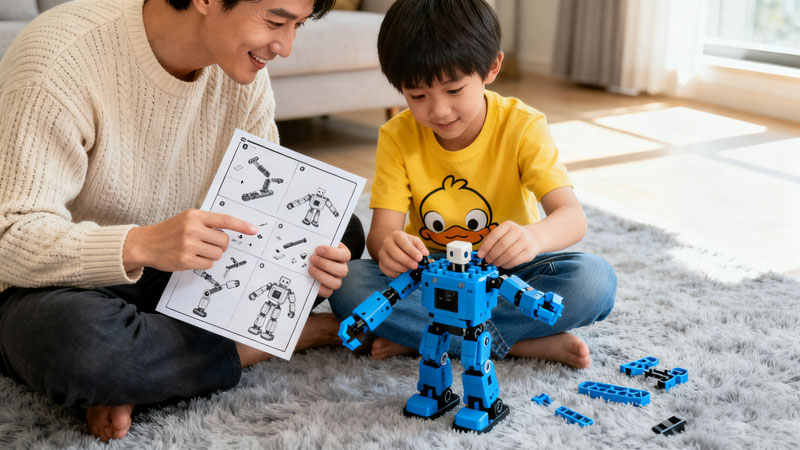The global toy aisle is undergoing a quiet revolution. Today's parents are no longer just asking, "Is it fun?" They're increasingly prioritizing a more profound question: "What will my child learn?" This shift has propelled educational toys, particularly STEAM and open-ended varieties, from a niche category to a central purchase driver. For brands, simply having a great product is no longer enough. The key to winning in this competitive landscape lies in mastering the art of storytelling that clearly communicates cognitive benefits to your overseas customers.

The New Parental Mandate: Play with Purpose
Driven by a desire to prepare their children for a future defined by technology and innovation, parents in North America, Europe, and other key markets are curating their playrooms with intention. They seek toys that deliver tangible developmental returns on investment.
- The STEAM Surge: Science, Technology, Engineering, Arts, and Math (STEAM) toys are seeing explosive growth. Parents view them as essential tools for building foundational skills in coding, robotics, and critical thinking in an engaging, hands-on manner.
- The Return to Open-Ended Play: Simultaneously, there is a powerful counter-trend towards simplicity. Open-ended toys—like magnetic tiles,
wooden blocks, and sensory kits—are prized for their ability to foster creativity, problem-solving, and independent thought. Unlike single-function toys, their play value never diminishes.
The challenge for suppliers and independent brands is bridging the gap between a product's inherent features and the parent's understanding of its real-world benefits.
To connect with overseas buyers and end-consuments, your product descriptions, website content, and marketing materials must tell a clear and convincing story. Move beyond technical specs and list the profound "how" and "why."
Step 1: Shift from "What It Is" to "What It Builds"
Your customer doesn't buy a circuit board; they buy a foundation in logical thinking. They don't buy a set of blocks; they buy a toolkit for creativity.
- Weak: "This kit contains 50 pieces for building 3 models."
- Strong: "Cultivate a Young Engineer's Mindset. This 50-piece system doesn't just build 3 models; it introduces core principles of structural engineering and physics through hands-on experimentation, teaching cause and effect and resilient problem-solving."
Step 2: Use the Language of Development
Incorporate keywords that resonate with parents' aspirations for their children. Weave these terms naturally into your narrative.
- For Logic & Critical Thinking: "Develops algorithmic thinking," "encourages systematic problem-solving," "strengthens executive function," "teaches if-then logic."
- For Creativity & Imagination: "Fosters divergent thinking," "unlocks narrative storytelling," "promotes spatial reasoning," "encourages self-directed play."
Step 3: Showcase the "Open-Ended" Promise with Scenarios
For open-ended toys, parents need help visualizing their long-term value. Show them.
- Instead of: "A set of 100 magnetic tiles."
- Try: "The Only Toy That Grows With Your Child. One day, it's a simple castle, fostering shape recognition and fine motor skills. The next, it's a complex geometric city, teaching architectural balance and patience. Watch as your toddler's stacking becomes your teenager's understanding of molecular structures."
Step 4: Provide the "Play Script" for Parents
Many parents want to be involved but don't know how. Position your product as a bridge for family interaction.
- Add a section: "How to Play & Learn Together:"
For a Coding Robot: "Ask your child to 'debug' the robot's path when it gets stuck. This reframes frustration as a valuable step in the computational thinking process."
For a Building Set: "Challenge your child to build the tallest, most stable structure possible. Discuss what makes it stable, introducing concepts of gravity and balance in a practical context."
Conclusion
The modern parent is a savvy consumer of both products and ideas. They are investing in their child's cognitive development with every purchase. By refining your messaging to highlight the cultivation of creativity, logic, and critical thinking, you do more than just sell a toy—you offer a valuable learning outcome. In the crowded educational toy market, the brand that can best articulate this powerful story will not only win the sale but also build lasting trust and loyalty.
Post time: Oct-10-2025






